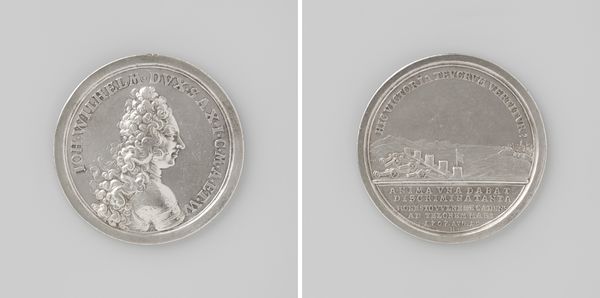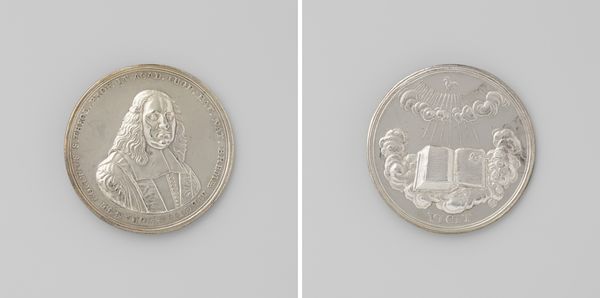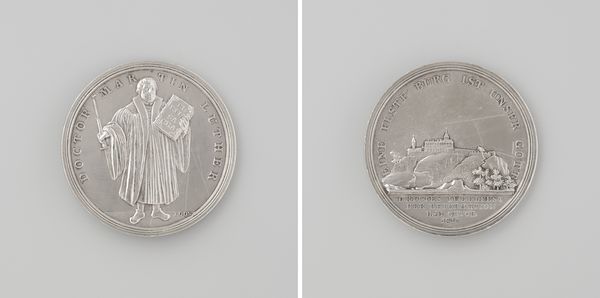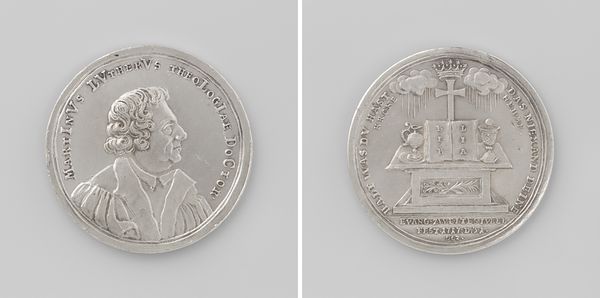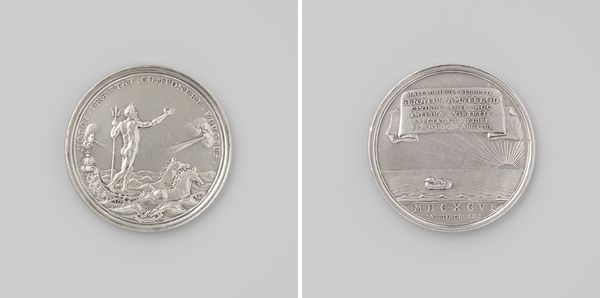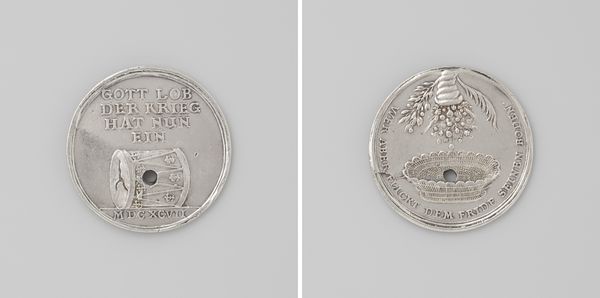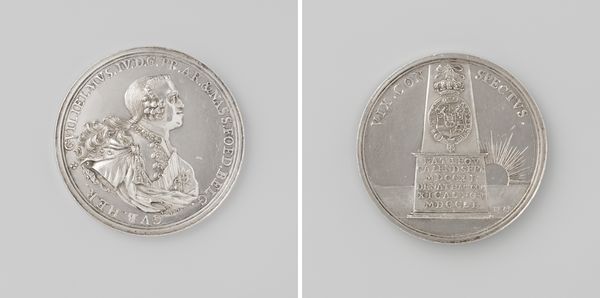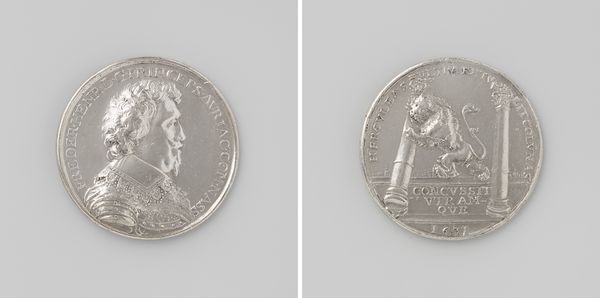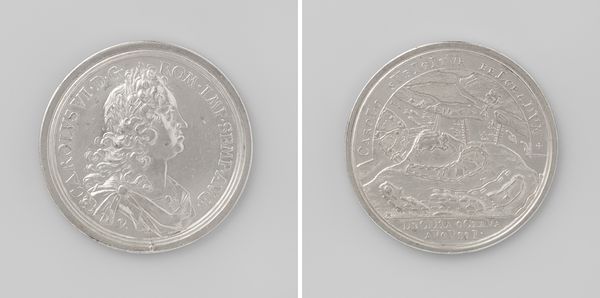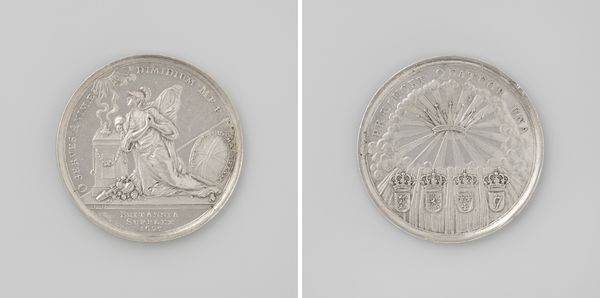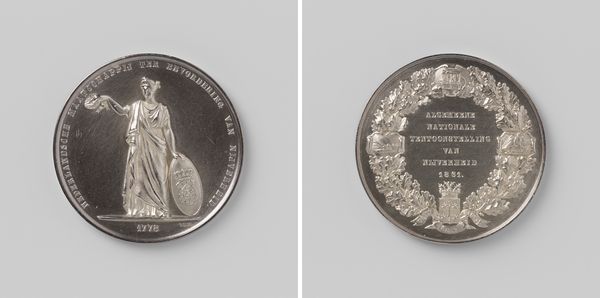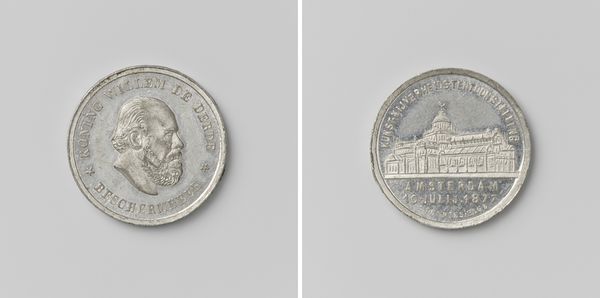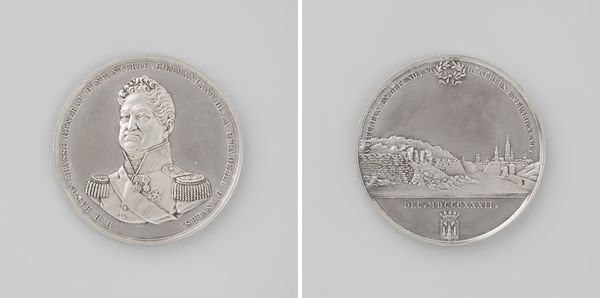
print, metal, relief, sculpture
#
portrait
#
neoclacissism
# print
#
metal
#
relief
#
sculpture
Dimensions: diameter 4.8 cm, weight 39.58 gr
Copyright: Rijks Museum: Open Domain
Curator: Here we have an interesting print, a commemorative medal from 1832 titled "Defense of the Citadel of Antwerp, in honor of Chassé." Editor: The immediate impression is austere, almost cold. The metallic sheen, even in print form, projects authority and unyielding resolve. Curator: Indeed. The artist, Moses de Vries, likely employed a metal relief technique to create a design suitable for mass production and distribution as a symbol. Consider the deliberate choice of materials: the medium reinforces the message. Metal connotes permanence and power. Editor: Absolutely. But this "permanence" is itself a constructed narrative. Commemorating Chassé implies condoning his actions during the siege of Antwerp, which had profound consequences for Belgian identity and independence. This piece then, takes a definitive stance, despite its objecthood. Curator: The method of production facilitated broad dissemination, influencing popular perception of the event. Medals like these were a tool to shape public sentiment. Examining their role in the media landscape of the time opens the doors for analyzing manufacturing costs, labor investment, and accessibility to specific demographics. Editor: Exactly, the context is essential. While on the one side, we see the portrait of General Chassé and on the other, a rendering of the Antwerp Citadel. This seemingly objective portrayal elides the violence and suffering inherent in any siege. Curator: A very focused way of considering objects as records shaped by economics and material processes—that’s the very real-world role art plays, right? Editor: Yes, understanding the social and historical context of the object permits insight into the larger discourse surrounding national identity and political power at that moment. It serves to open up how identities are curated through art and action. Curator: And it's through acknowledging both its construction and its historical usage that we fully realize the importance of de Vries' medal. Editor: Precisely. It’s through this lens, in which the work moves beyond pure object and into the complicated historical context that its impact becomes apparent.
Comments
No comments
Be the first to comment and join the conversation on the ultimate creative platform.
